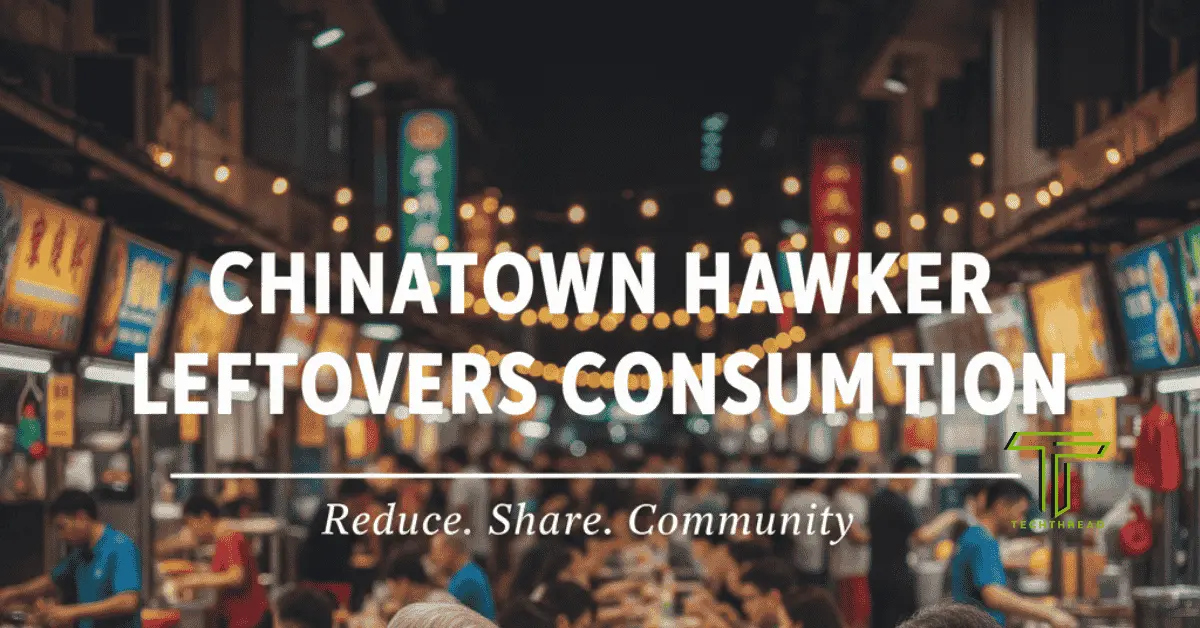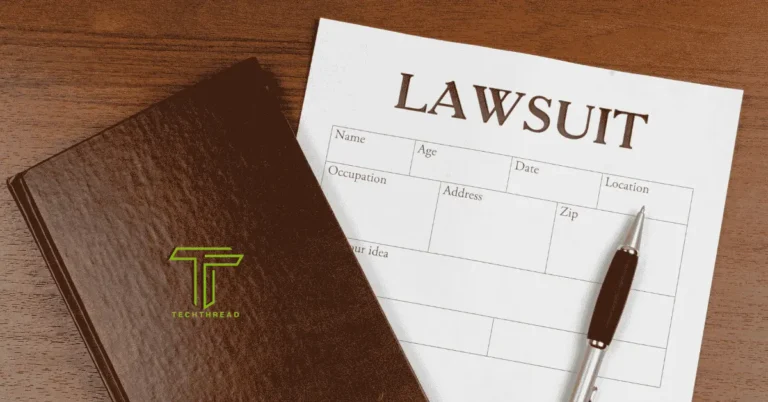Chinatown Hawker Leftovers Consumption: A Guide to Safe, Sustainable Practices
Chinatown hawker centres are piled up of warm and good, untouched food, but destined for the bin. It’s a daily problem that few notice but affects everyone. While some struggle to afford a decent meal, edible food is thrown out in bulk.
You might’ve wondered: What happens to all that leftover hawker food? Or is it ever reused, and if so, is it safe to eat?
Here you get to know how Chinatown Hawker Leftovers Consumption works. Complex and what is being done to reduce waste, and how some these leftovers distributed into community.
Table of Contents
Understanding Hawker Centre Food Waste
Every day, stalls at Chinatown Complex and People’s Park Centre prepare meals in large quantities to meet peak-hour demand. But not all of it gets sold. When closing time comes, much of that food still edible ends up in the bin. This cycle adds to both environmental waste and rising questions about better food use.
Here’s what drives this daily food waste at hawker centres:
- High Meal Volumes: Thousands of dishes are prepared daily, leading to frequent overproduction.
- Food Still Edible: Much of the unsold food is freshly made but tossed due to time limits or lack of safe handling options.
- No Surplus Management: Unlike restaurants or hotels, hawker stalls usually don’t take part in organized surplus food programs.
- Waste of Resources: Disposing of leftovers turned to wastage of water, gas, ingredients, and human effort.
- Excess food preparation: The cooking of extra meals to avoid running out during rush hours, This increases leftover volume.
- Limited Storage: Many stalls don’t have chillers or proper storage, making difficult to save food overnight.
- Commonly ignored issue: While household food waste gets public attention, waste from hawker centres is often overlooked.
How Culture Influences Leftover Food Habits
In many Asian cultures, especially among Chinese families, throwing away food is seen as wrong. That belief still holds strong today, especially among older people and those living on tight budgets in places like Chinatown. For them, eating leftover hawker food isn’t a sign of desperation it’s simply a practical choice.
Here’s how culture and social conditions influence leftover consumption:
- Respect for Food
Traditional values stress finishing every part of a meal. Wasting food is especially looked down on by elders who experienced hardship or rationing. - “Waste Not” Mentality
It’s normal in many older Chinese households to keep leftover food for the next meal. That same mindset often applies when people see unsold hawker food it’s not waste, it’s still worth saving. - Shared Resource
In different communities, it is common to share food with neighbors rather. That habit still influences how people in places like Chinatown think about leftovers today. - Looking Out for Seniors and Struggling Families
Some residents especially the elderly quietly accept leftover meals. It helps them stretch limited budgets without skipping meals. - Community Fridge Programs
Some programs now encourage hawkers to place their extra food in public fridges, where anyone can take it. These efforts are slowly growing, but they depend on people. - Quiet Acts of Sharing Between Stallholders
Some hawkers give extra food to nearby stallholders, cleaners, or delivery riders. While not official, this reduces waste and helps others.
Environmental Benefits of Redistributing Chinatown Hawker Leftovers
Throwing away cooked food does not seem like a big deal. But when it happens at hundreds of stalls every day, that make lot of difference. Singapore throws out over 800,000 tonnes of food each year and a good portion comes from places like hawker centres. Finding ways to share or reuse that extra food can bring that number down and ease the strain on the environment.
Here’s Chinatown Hawker Leftovers food programs create environmental benefits:
- Cuts Down Landfill Waste
When edible food is not thrown and distributed, less ends up in landfills. This helps reduce space used and slows down trash pile-up near urban zones. - Decreased Methane
Rot food produces methane, a greenhouse gas which is more harmful than carbon dioxide. Avoid wasting of food can decrease methane production. - Decrease of Energy and Water Waste
Wasted food thrown out means wasted fuel, electricity, and water used in preparing it. Reusing leftovers makes those resources count. - Supports Circular Economy
Redistribution turns excess food into a usable resource feeding people instead of wasting ingredients. It creates a system where less is thrown away and more is reused. - Smarter Cooking Habits
When hawkers know food will be collected and eaten, they may start preparing smarter portions or joining surplus food programs, helping reduce overproduction long term. - Examples in Practice
Platforms like Treatsure let hawkers sell unsold meals at discounted prices late in the day. NGOs working with community also collect food and make it available to nearby residents.
How to Handle Leftovers the Right Way
Leftover food usage can help cut down waste, but it needs to be handled with care. Not every unsold meal is safe to eat. If food is not stored correctly, it is unsafe to eat. That’s why food safety matters especially at hawker stalls, where cooking happens in the open and conditions can be harder to control.
Here’s the health and safety concerns:
Risk of Foodborne Illness
- Time and Temperature Matter
Cooked food left at room temperature for more than 2 hours may allow bacteria to grow. Warm weather, like in Singapore, makes this risk even higher. - Common Health Risks
Leftovers that aren’t cooled or reheated properly can carry E. coli, Salmonella, or Listeria. These bacteria can cause food poisoning, especially in older adults or people with weaker immune systems. - Cross-Contamination Issues
Some stalls may store leftovers near raw ingredients or reuse packaging. This increases the chance of contamination.
Regulations from the Singapore Food Agency (SFA)
- Temperature Control Guidelines
Hot food must stay above 60°C, and cold food must be stored below 4°C. Once food falls into the “danger zone” between these temperatures, it must be used quickly or thrown away. - Labeling Requirements
All packaged food, including leftovers, must be labeled with the preparation date, ingredients, and allergen info. This helps consumers make safer choices. - Hygiene Enforcement at Hawker Centres
Hawker stalls are subject to regular checks by the SFA. Cleanliness grades are posted publicly. Stalls that fail inspections face fines or closure. - Tray Return & Cleaning Systems
Singapore has improved tray-return systems and centralized dishwashing services. This reduces bacteria spread and keeps the eating area more hygienic.
What This Means for You
If you’re buying discounted hawker food near closing time or picking up a free meal from a community fridge, check:
- How the food is stored (hot or chilled)
- Whether it’s labeled with prep time
- If it looks and smells fresh
Real-World Case Studies & Tech Solutions
Efforts to manage leftover hawker food aren’t just ideas they’re happening now, quietly but steadily, across places like Chinatown and other parts of Singapore. From mobile apps to local programs, the shift toward smarter food use is growing. These real-world efforts show that reducing waste and sharing food is possible with the right tools and awareness.
Case Study: Chinatown Complex
Chinatown Complex, one of Singapore’s largest hawker centres, is home to over 200 stalls. Many vendors there face the same issue unsold food at day’s end. While most still discard it, a small number have started passing leftover portions to nearby workers or sharing with other stallholders. These informal efforts reflect the “waste not” mindset but lack structure and food safety checks.
Treatsure App: Selling Unsold Meals
Treatsure, a local app, connects users with businesses offering surplus food. Some hawker stalls now use the platform to sell unsold meals at low prices after peak hours. It helps reduce waste, brings in small extra earnings, and allows more people to afford cooked meals.
How it works:
- Stalls list their available items close to closing time.
- Customers reserve and pick up the meals within a set time window.
- Food safety guidelines are followed, with proper storage and reheating steps included.
OLIO App:
OLIO is a food-sharing app that lets people and businesses give away extra food instead of wasting it. In some areas, hawker stalls work with OLIO volunteers who pick up leftover meals and either deliver them to families in need or place them in nearby community fridges.
Refrigeration Systems
Some food-sharing groups now use portable cooling boxes to keep leftovers cold during delivery. These boxes keep the food below 4°C, which follows the safety guidelines from the Singapore Food Agency. It helps make the food safer to share and lets volunteers collect it from more places.
Data Tracking & Waste Reports
Platforms like Management Works Media and community NGOs have begun tracking hawker waste levels. Their reports help target high-waste areas and show trends over time. This data supports better planning and education for vendors and food rescue groups.
Best Practices
Even with good intentions, poor handling can turn safe food into something risky. That’s why it’s important to handle leftovers properly whether you’re running a hawker stall, helping as a volunteer, or just picking up a meal from a community fridge. Safe reuse doesn’t need fancy equipment, just awareness and consistency.
For Hawker Stall Vendors
If you’re a vendor dealing with unsold meals, here are simple steps to reduce waste while keeping food safe:
- Cool It Down Quickly
Leftover food should be cooled from above 60°C to below 4°C within two hours. Use shallow containers to speed up the process. - Label Everything
Every package should include:
- Time and date of preparation
- Main ingredients
- Any known allergens
- Time and date of preparation
- Use Food-Grade Containers
Avoid reusing single-use plastic. Store food in containers approved for reheating or chilling. - Avoid Mixing Old and New
Don’t combine leftovers with freshly cooked batches. This increases the chance of spoilage or contamination. - Track Portions
Take note of what typically goes unsold. Adjust cooking amounts over time to reduce surplus. - Offer End-of-Day Deals
Use apps like Treatsure to offer last-hour meals at lower prices. It moves food fast and earns back some of your cost.
For Consumers and NGOs
If you’re collecting, sharing, or eating leftover hawker food, follow these safety tips:
- Check Labels Before Eating
Look for prep time and ingredients. Avoid unlabeled or poorly stored items. - Reheat to a Safe Temperature
Heat food to at least 75°C before eating. Cold food should be eaten only if it’s been stored under 4°C. - Smell and Look First
If food looks off, smells sour, or feels sticky, don’t eat it even if it’s free. - Use Insulated Carriers
If you’re transporting leftovers to others, use cooling bags or thermal boxes to keep the food at safe temperatures. - Educate and Inform
Volunteers should know basic food handling rules. A quick guide or checklist helps everyone stay on the same page.
How to Support Responsible Consumption
You don’t need a big plan or official role to make a difference. Whether you’re a customer, a volunteer, or just someone who cares, small changes in how you order, eat, or share food can go a long way. When more people get involved, less food ends up in the bin and more people get the meals they need.
Order Responsibly
- Know Your Portion Size
Only order what you can finish. Hawker meals are often filling avoid over-ordering just because it’s cheap. - Request Less Rice or Noodles
Most stalls are open to reducing carbs if asked. This helps reduce plate waste. - Share Dishes
If dining in a group, try sharing larger items instead of getting one meal per person.
Bring Your Own Containers
- For Takeaway Leftovers
If you can’t finish your meal, ask to pack the rest. Carrying a reusable container makes this easy and avoids extra packaging. - For Community Collection
If you’re helping pick up surplus food for redistribution, reusable containers help keep meals safer and fresher during transport.
Support Responsible Hawker Stalls
- Buy from Stalls Using Food Apps
Look out for hawkers on Treatsure or those who offer end-of-day discounts. These vendors are making the effort to reduce waste. - Encourage Safe Sharing
Talk to your favorite vendors about whether they’ve heard of community fridge efforts or food-sharing programs. Awareness starts with conversation.
Donate or Volunteer
- Join Local Food Rescue Groups
Groups that run community fridges or collect surplus food always need extra hands. Even a few hours a month makes a difference. - Contribute Extra Items
While fresh meals are most useful, community fridges also take sealed dry goods, drinks, and utensils.
Spread the Word
- Share stories, photos, or information about safe food sharing online or with friends. When more people know, more take part.
Conclusion:
Chinatown hawker leftover food does not need to go to waste. With proper handling, awareness, and a bit of community support, that extra food can still do good.
You can play a vital role by ordering only what you’ll eat, taking your leftovers home, supporting hawkers who reduce waste, or helping out with local food-sharing efforts. Small steps like Chinatown Hawker Leftovers program these can help feed others and protect the environment one meal at a time.
TL;DR:
Leftover hawker food in Chinatown is being reused to cut waste and support those in need. With safe handling and community help, good meals don’t go to waste.
Also Read: Vanderbilt Workforce Management: Optimize Your Workforce Efficiently







